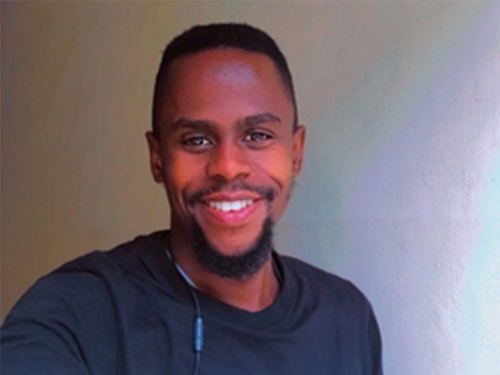Youth Learn to Say No to Sexual Violence
Summary
- CDC partners with No Means No Worldwide in Botswana, Tanzania, Uganda, Zambia, and Zimbabwe to implement violence prevention programming for adolescent girls and boys.
Violence prevention programs can help create safer and healthier communities for youth to grow and thrive. Through the U.S. President’s Emergency Plan for AIDS Relief (PEPFAR), the Centers for Disease Control and Prevention (CDC) partners with No Means No Worldwide in Botswana, Tanzania, Uganda, Zambia, and Zimbabwe to implement transformative violence prevention programming for adolescent girls and boys.
No Means No trains instructors to deliver the evidenced-based No Means No sexual and gender-based violence prevention curricula to youth ages 10-20 in high-risk environments. In 2022, with support from CDC, the program trained 40 male and over 100 female instructors. Instructors train girls on mental, verbal, and physical skills used to prevent sexual assault. The training with boys focuses on building resiliency and bystander intervention skills, challenging rape culture, and practicing consent. No Means No also encourages young people who have experienced sexual violence to disclose it to trusted adults. Finally, instructors and local staff provide referrals and create support groups to ensure survivors of sexual violence receive needed medical, legal, and psychosocial support services.
The approach recognizes the critical role of boys and men in preventing sexual and gender-based violence and compliments the empowerment of self-defense training for girls. The No Means No program for adolescent boys reshapes harmful beliefs related to gender and sexuality while promoting positive masculinity. The program helps boys recognize the cycles of violence they experience and provides skills to intervene when they witness violence against others. In 2021, pre- and post-surveys were administered to No Means No participants to assess attitudes toward gender equity. After completing the program, boys showed a 68 percent improvement, and girls a 29 percent improvement toward gender equity. Additionally, knowledge about preventing sexual violence improved by 108 percent for boys and 44 percent for girls.

Isaac, No Means No Worldwide Coordinator, is working with boys and men to stop gender-based violence.
“Boys need this program.”
The transformative nature of the No Means No violence prevention program for adolescent boys and young men drew Isaac from Uganda to become an instructor in 2020. “Two of my friends were rape victims, and I saw them struggle to recover from the trauma; [this] made me question whether I can do anything to stop it, and then the No Means No program came on board.” He says the program positively impacted his day-to-day life: “A lot has changed because I realized I had to live whatever I say about my work, whether in public or private life. It has created a lot of harmony between my fiancée and me and towards all the women I see and interact with. Mostly embracing equality and empowering women, young girls, and boys.”
After working to reach youth in his community as an instructor, Isaac was driven to make a more significant impact. Eventually, he became a member of the No Means No team as a lead trainer, helping to develop the next generation of male instructors. “Our program focuses on creating a different perspective on how young men and boys see women and girls. It helps men and boys to embrace gender equality and feminism, empowers survivors of sexual violence, teaches bystander intervention, and encourages positive masculinity. A lot of effort has been made toward empowering girls, but boys and men have not been equipped to challenge those societal norms that lead to sexual violence. Boys need this program.”
“I used my voice.”
The No Means No program for adolescent girls focuses on increasing their assertiveness and boundary-setting by developing the verbal and physical skills they need to defend themselves against sexual violence. Girls also learn to understand their rights and recognize different types of harassment, abuse, and sexual violence.
In Zambia, Lauren, a 14-year-old program participant, described what she learned: “I enjoy the No Means No program because it teaches me how I can defend myself using my body, my mind, my voice, and my eyes… They teach me how to be brave and stand up for myself. Through No Means No, I have learned that no one is allowed to cross my boundaries. … I’ve been telling my sisters and friends about No Means No [so] that they can also learn how to defend themselves.” In Uganda, a program participant shared, “I used my voice when I was in a taxi. A man was trying to touch my thighs, and I used my voice to shout, and he immediately stopped touching me.”
Creating a World Free from Violence
Through program delivery, research, and advocacy, No Means No, and its partners are on track to educate over 1 million young people annually by 2025. As demonstrated in a recent study, the program empowers adolescent girls and young women to take action – furthering the goal of ending sexual violence. Through unique program partnerships, like the one with No Means No, CDC is helping to create a world free from violence.

CDC Director, Dr. Rochelle Walensky (center), US Ambassador to Uganda Natalie Brown (left), and CDC Country Director, Dr. Lisa Nelson (left), join adolescent girls in the Uganda No Means No program and demonstrate their skills at saying “No.” Photo by: Chris Lubega
1 As measured on pre- and post-surveys